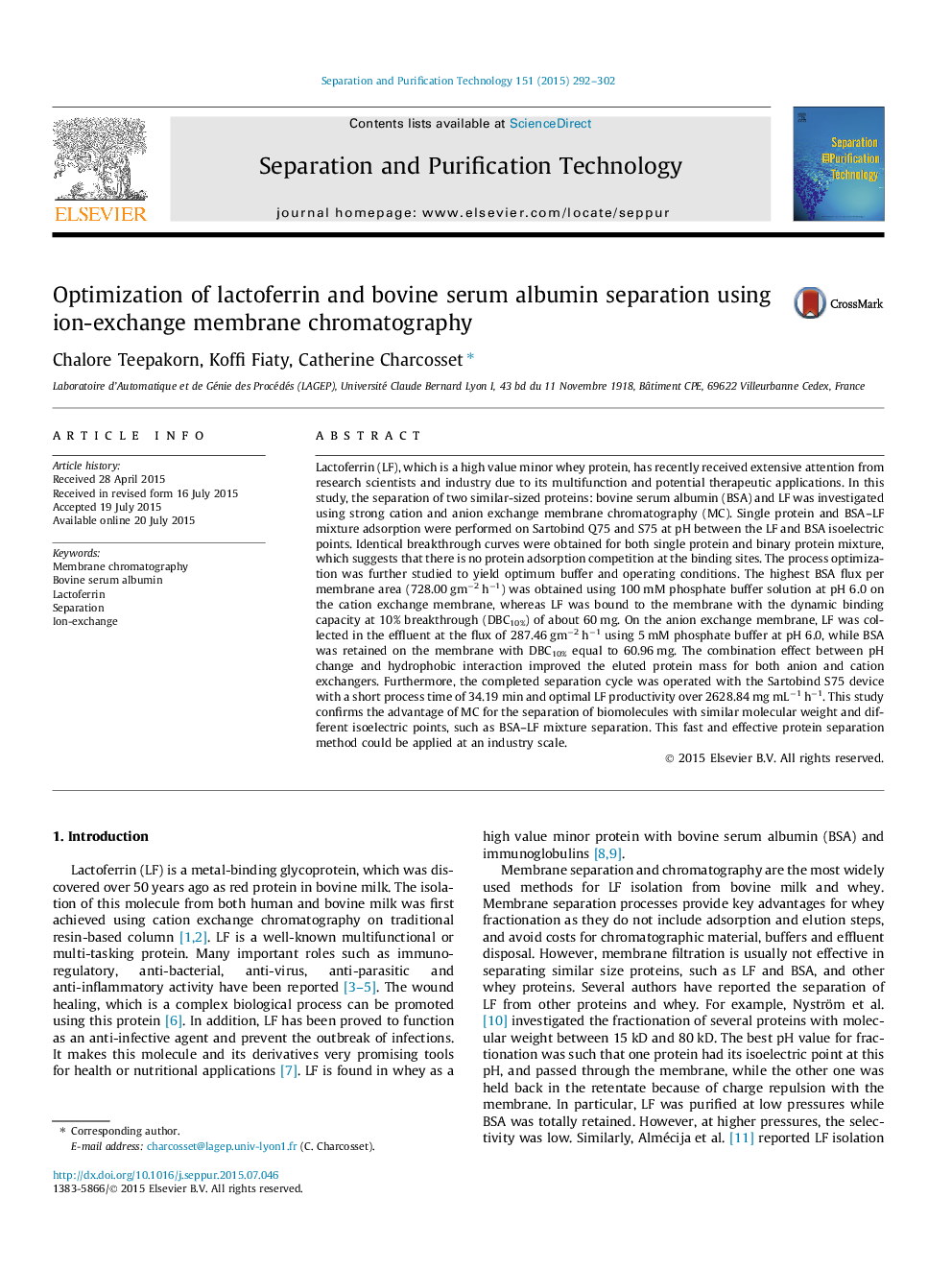| Article ID | Journal | Published Year | Pages | File Type |
|---|---|---|---|---|
| 640439 | Separation and Purification Technology | 2015 | 11 Pages |
•Ion exchange membrane chromatography was used for separation of BSA–LF.•LF (IP = 8.7) was bound on the cation exchange membrane and not BSA at pH = 6.0–8.0.•BSA (IP = 4.7) was bound on the anion exchange membrane and not LF at pH = 6.0–8.0.•Binding capacity and flux were high at optimal buffer and operating conditions.•The amount of protein eluted was greater than 80% at low flow rate.
Lactoferrin (LF), which is a high value minor whey protein, has recently received extensive attention from research scientists and industry due to its multifunction and potential therapeutic applications. In this study, the separation of two similar-sized proteins: bovine serum albumin (BSA) and LF was investigated using strong cation and anion exchange membrane chromatography (MC). Single protein and BSA–LF mixture adsorption were performed on Sartobind Q75 and S75 at pH between the LF and BSA isoelectric points. Identical breakthrough curves were obtained for both single protein and binary protein mixture, which suggests that there is no protein adsorption competition at the binding sites. The process optimization was further studied to yield optimum buffer and operating conditions. The highest BSA flux per membrane area (728.00 gm−2 h−1) was obtained using 100 mM phosphate buffer solution at pH 6.0 on the cation exchange membrane, whereas LF was bound to the membrane with the dynamic binding capacity at 10% breakthrough (DBC10%) of about 60 mg. On the anion exchange membrane, LF was collected in the effluent at the flux of 287.46 gm−2 h−1 using 5 mM phosphate buffer at pH 6.0, while BSA was retained on the membrane with DBC10% equal to 60.96 mg. The combination effect between pH change and hydrophobic interaction improved the eluted protein mass for both anion and cation exchangers. Furthermore, the completed separation cycle was operated with the Sartobind S75 device with a short process time of 34.19 min and optimal LF productivity over 2628.84 mg mL−1 h−1. This study confirms the advantage of MC for the separation of biomolecules with similar molecular weight and different isoelectric points, such as BSA–LF mixture separation. This fast and effective protein separation method could be applied at an industry scale.
